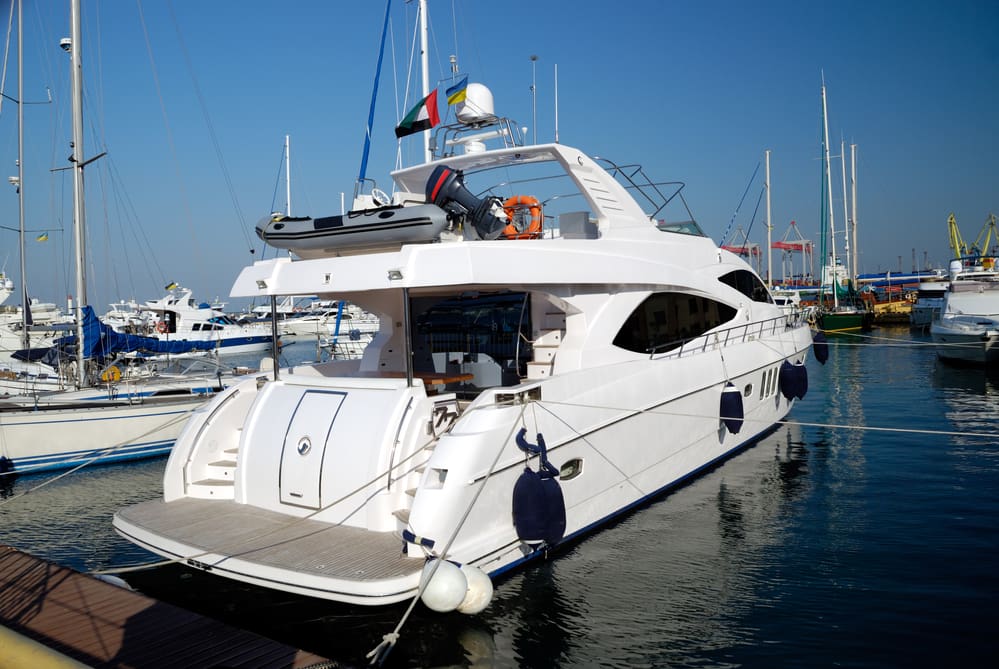One of the things all prospective boaters should take into account is boat depreciation. Many kinds of boats exist, as well as brands, models, and features. Not every depreciation curve is going to be the same, but boats do depreciate in value—much like motor vehicles. Knowing how much your new boat may depreciate can help you plan for the future when you want to sell it and buy an upgrade.
What is the Depreciation Rate of Boats?
Interestingly, boats see less immediate depreciation than cars. Since boats are used less often than you use your car to get around, cars lose their value at a much faster rate. Furthermore, fishing boats, pontoon boats, and center console boats experience less depreciation than more expensive vessels, such as yachts. Generally speaking, however, these are the average depreciation percentages:
- Within the first year of purchase: 10-15% depreciation
- By the fifth year of ownership: 20-30% depreciation
- By the tenth year: 30-40% depreciation
After the tenth year, depreciation rates slow significantly.
Let’s have an example. If you purchase a boat for $36,900 and it depreciates by 18% in one year, the adjusted value of that vessel is now $30,400.
Brands That Depreciate The Slowest
Some boat brands are more popular and respected, ensuring they retain their value for longer. Here is a list of boat brands with the least depreciation:
- Boston Whaler
- Bertram
- Grady-White
- Sea Ray
- Mastercraft
- Yamaha
- Tracker
- Viking Yachts
- Lund
In other words, so long as the boat you have is not an off-brand model, it should not depreciate as fast as the averages mentioned earlier. By purchasing a popular boat brand or one that is sought after, you ensure that the value of the boat does not depreciate. Some makes and models may experience a -36% depreciation, while others of the same boat type could have a -18% depreciation.
Types of Depreciation
Not all depreciation is the same—according to accountants. There are three ways an accountant may describe depreciation:
- Sum of Year’s Digits: This is calculated by taking the overall cost of the boat and then estimating the useful life of your vessel. Then, the accountant figures out how much the boat will be worth when it is no longer useful. From there, they can then calculate the annual percent of depreciation.
- Declining Balance Depreciation: Using the price of the boat, the useful life, and then the standard rate your boat depreciates at per year.
- Straight Line Depreciation: Using the starting cost of the boat, the useful life (calculated in years) is estimated. Afterward, the cost of what the boat will be when you sell it in the future is determined to figure out depreciation.
Most of the time, though, you can research the depreciation of a model before buying or selling by looking up listings on broker sites. Compare the cost of a new and used boat to see which makes and models are holding up best, in terms of price. You will be surprised to find that some boats are best bought used, while others are a better investment when purchased brand new.
How to Keep a Boat From Depreciating
While boat depreciation is a fact of nature, there are ways to keep it from impacting your boat too much. Here are some methods for retaining the value of your boat for longer:
1. Maintain Your Boat
Boats require routine maintenance, just like a vehicle. Taking care of the interior and exterior of the vessel, flushing out the cooling system, winterizing—all of these are things you cannot skimp on. You also have to pay attention to the electrical appliances. If you take your boat into saltwater, there are so many other things you need to maintain before putting your boat into storage.
However, while this might seem like a bit of a hassle, committing to keeping your boat in tip-top shape ensures its value depreciates less.
2. Commit to Weather Proofing
A weather-proofed vessel is much more alluring to potential buyers. In fact, they may be willing to pay more for a boat that has been outfitted with all the right materials. For example, there are many vessels with wooden interiors that have rotted out over time. If you replace those wooden furnishings with ones made of aluminum or fiberglass, you increase the value of the boat. Plus, it improves the overall appearance.
Otherwise, keep up with the maintenance and use marine varnish on the wooden interiors throughout the year.
3. Repair and Upgrade Components
Just like a home, you sometimes have to make renovations in order to increase the overall value. If you work on making your boat better than what it was when you purchased it, depreciation won’t strike as hard. New floors, bimini tops, and pedestal seating are all preferred upgrades that make your boat all the more valuable to potential buyers.
Now, what about the upgrades that you can skip? That would be exterior lighting and sound systems. Most buyers do not care about these things, so if they are not functioning correctly before selling, have the systems repaired instead.
4. Keep It Out of the Sun
UV damage is the enemy of boats everywhere. Yes, while boats are made to take you on adventures out at sea, where shade is rare, UV rays still damage the seats, sales, and paints on your ship. Thus, it will sell for much less.
Buy a cover for your boat while it is not being used. Once a season, have a boat detailer wax the entire boat (or you can DIY it). Also, avoid washing your seats with any harsh chemicals, as that can cause the materials to deteriorate faster in the sun.
Let Us Help You Buy or Sell Your Boat
Understanding a bit about boat depreciation can be useful for those both buying and selling boats. Rather than holding onto a boat that will only depreciate further, you could sell now, for instance. While you can always buy or sell a boat yourself, why not reach out to Yacht Brokers of Annapolis? Our friendly and experienced team can guide you through the process, ensuring you get the best deal. Give us a call or send us a message today.





